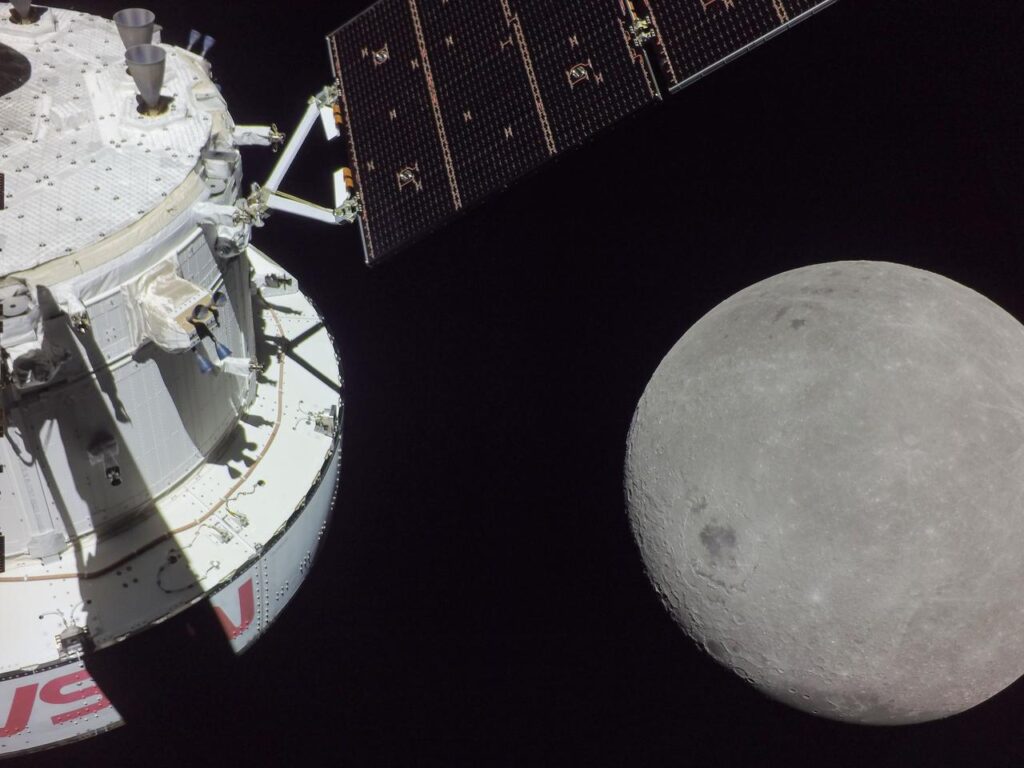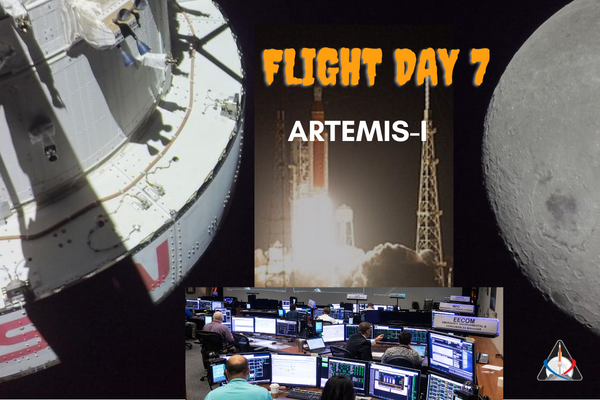Image : Inset Elements by : NASA
NASA on its news report update was quick to announce the current status of the Orion Spacecraft that successfully separated from its ICPS or ( Interim Cryogenic Propulsion Stage ) engine as per plans.
As per NASA reports, on Nov 22, 2022, the Orion Spacecraft was on its seventh day into the Artemis I mission. Artemis-I which is a flight test mission around the Moon will pave the way for astronauts to fly on future missions. On Nov 22, as per the latest NASA updates, at 12:02 a.m. CST, Orion completed the fifth outbound trajectory correction. It achieved this by firing the European service module’s auxiliary engines for 5.9 seconds, which changed Orion’s velocity by 3.2 feet per second.
Flight Controllers Task on Day 7 from Johnson Space Centre Houston
The White Flight Control Room team based at NASA’s Johnson Space Center in Houston was up on its planned testing task. The Flight Control team continually tests the Orion Spacecraft’s Star Trackers. In doing so, their sensitivity to thermal variations could be determined. The technical engineers in the Control Room also used the Optical Navigation System to gather additional imagery of the Moon. Both, Star Trackers and the Optical Navigation System are part of Orion’s advanced guidance, navigation, and control system. These systems help identify the Spacecraft’s location in space, or which way it’s pointed, and where it’s going.

As per NASA, on Day 7 of the flight, flight controllers at Houston will perform the Search Acquire and Track (SAT) mode developmental test objective. SAT mode algorithm tests are performed to test SAT module dependency in case of adverse events. These adverse events could be loss of Orion’s navigation state with Earth, or Orions extended loss of communications with Earth. The SAT mode test will also determine if the Spacecraft can establish communication with Earth in the event of a temporary power loss that may cause Orion to reboot its hardware.
How the SAT mode Test is Performed by Engineers
In order to test the SAT mode algorithm, flight controllers will command the Spacecraft to enter SAT mode, and after about 15 minutes, restore normal communication of Orion with Flight Control room at Houston. Testing SAT mode will give engineers confidence that SAT can be relied upon as the final option to fix a loss of communications when crew are aboard in future missions.
Orion will exit the lunar sphere of influence, or the gravitational pull of the Moon, at 10:31 p.m. CST and continue traveling toward distant retrograde orbit.
Artemis-I that was finally launched on Nov 16, 2022
Artemis-I was finally launched from Launch Complex 39B of the Kennedy Space Center in Florida. In the early hours of November 16, 2022, NASA successfully launched Artemis-I. As per the planned schedule, just eight minutes after launch, the core stage separated from the rest of the rocket that was invoked by the core stage engine Cut-off.
The ICPS or Interim Cryogenic Propulsion Stage propelled the Orion Spacecraft towards “translunar injection” and then Orion separated itself from ICPS. Its journey towards a lunar distant retrograde orbit, in which it will travel around 65,000 km beyond the Moon, i.e. 450,000 km away from our planet, is underway.
Cause for Twice Cancelled Launch Schedules in the Past
The previous attempt’s to launch Artemis 1 mission were canceled due to various issues. An engine bleed issue with RS-25 engines canceled the first launch attempt. Later, a hydrogen leak scrubbed the second launch attempt.
Brief of Artemis-I Mission
The mission of Artemis-I is to assess its performance during re-entry and gather data of the SLS rocket and Orion Spacecraft.
Orion’s heat shields will be heated up to nearly 2,760 degrees Celsius upon its entry into Earth’s atmosphere. Its entry into the earth’s atmosphere is estimated to be at a speed greater than 40,000 km per hour. The performance of the Spacecraft’s heat shields during lunar velocity reentry is a top mission priority.
For More Info on NASAs’ Artemis-I mission Read
Brief of Artemis-II and Artemis-III Mission That Will Follow Next
Artemis-II though similar to Artemis-I will have a crew of four astronauts aboard. Their mission will be to confirm the Spacecraft systems operate similarly to Artemis-I. This will certify future missions with humans aboard and also help understand Orion’s robust qualities.
This will give the crew and ground control engineers operational experience and performance data from ground zero. Artemis-III has been planned to enhance rendezvous, proximity operations, and docking and undocking operations.




